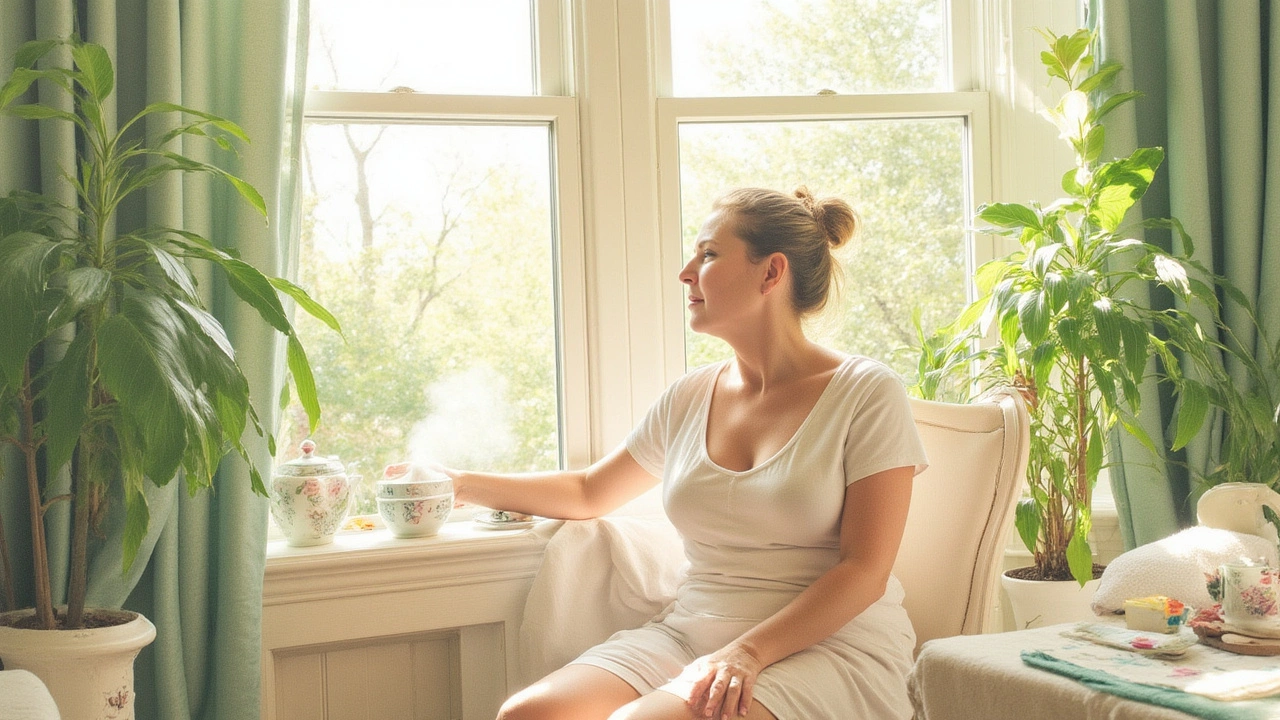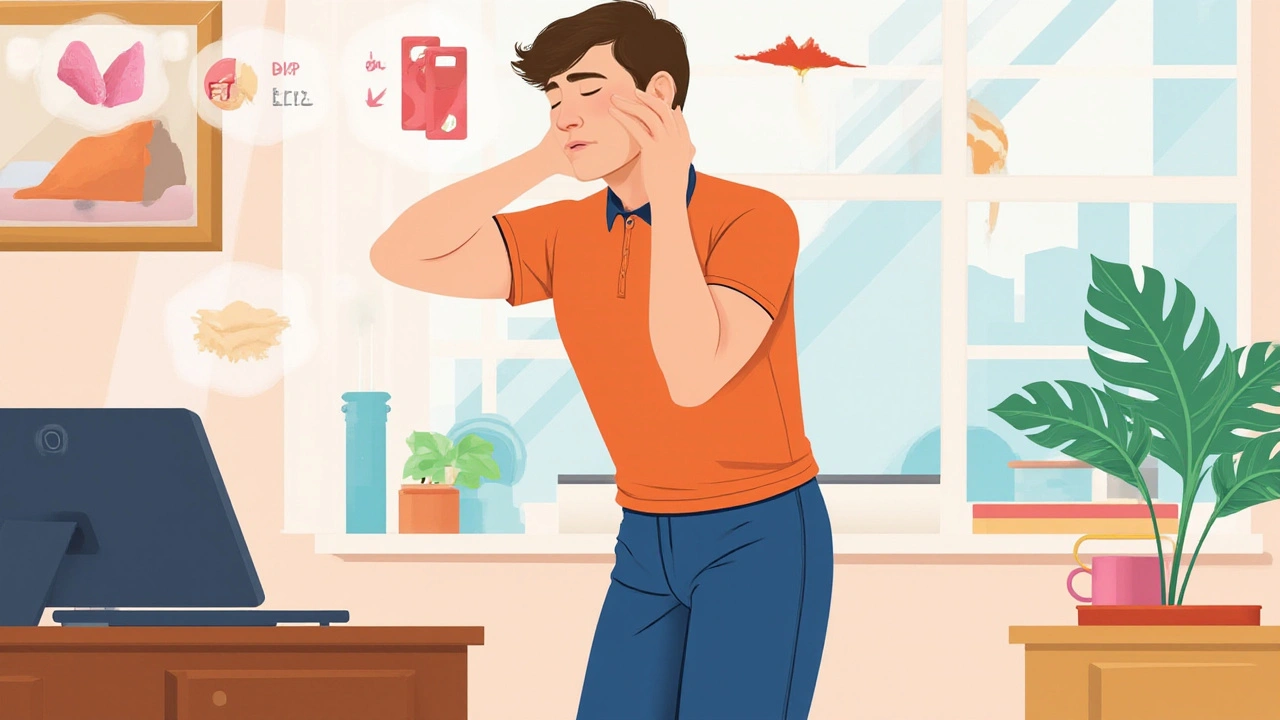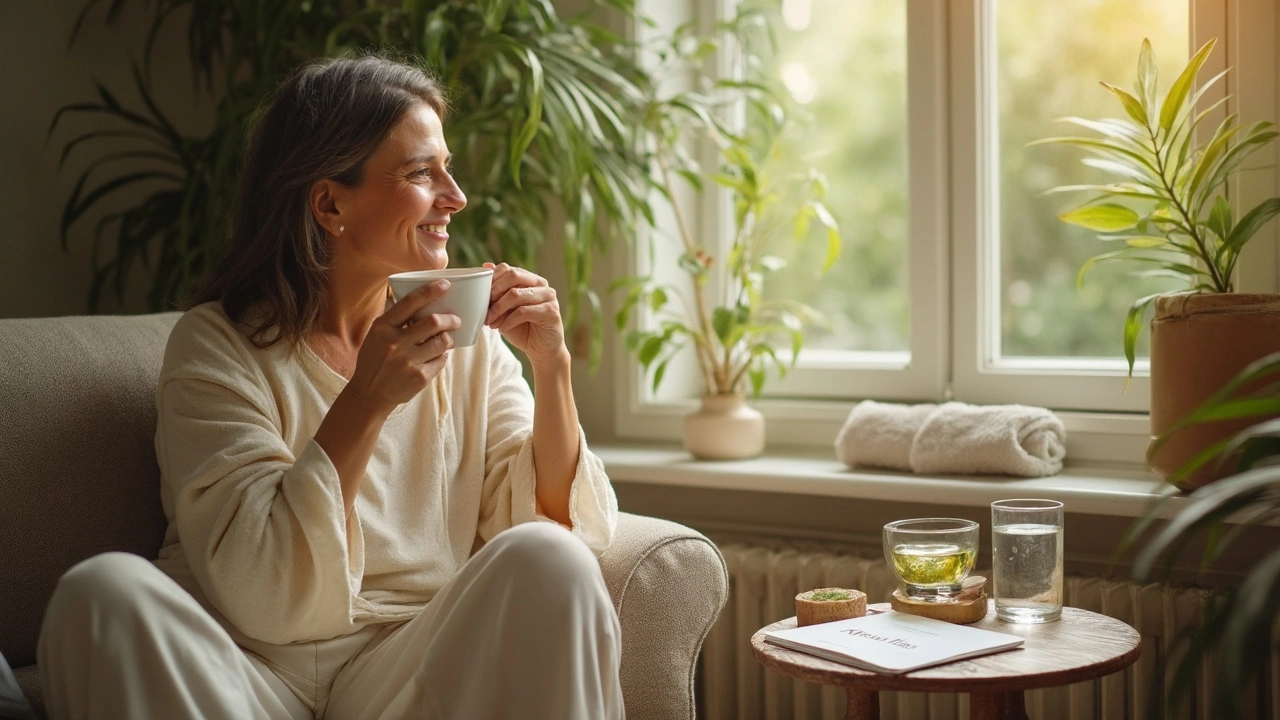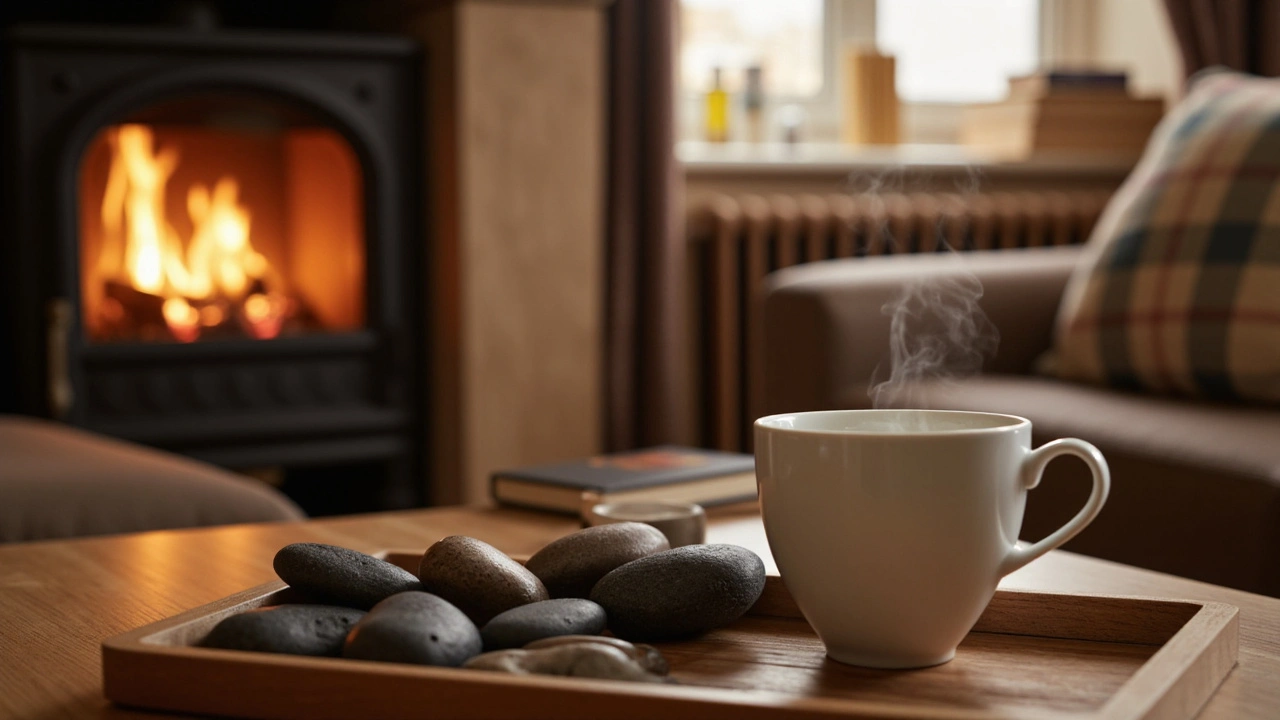Indian Head Massage Benefits: Is It Really Good for You?

Picture this: Someone's fingertips working gentle wonders across your scalp. Tension melts, and weirdly enough, you even feel your jaw unclench. That’s the magic behind Indian head massage, an ancient technique that’s managed to stick around for thousands of years. Not just because it feels amazing (it really does), but because people genuinely swear by its benefits. If the idea of a head massage only sounds like a nice spa day treat, think again—it packs more punch than you’d expect. Let’s pull back the curtain on what Indian head massage can actually do for you and why doctors, hair stylists, and even work-from-home warriors are raving about it.
Origins and Cultural Roots of Indian Head Massage
This isn’t some newfangled wellness fad. Indian head massage, called 'Champi' in Hindi, goes back over 1,000 years. Its roots are tangled with the ancient medical system known as Ayurveda, which aims to balance your mind and body through natural therapies. Originally, families in India used it at home, passing down massage techniques through generations. Parents would massage their kids’ heads to help with headaches, better sleep, and mental clarity. Even today, many Indian barbers give a quick head massage as part of a haircut—pretty much the highlight for a lot of people.
Ayurveda believes your head is where energy points cluster. By massaging the scalp, neck, face, and shoulders, you’re not just helping your muscles but supposedly nudging your whole body back into equilibrium. While that sounds spiritual, there’s some real-life science tucked in there, too. Certain pressure points on your head can actually influence how relaxed or alert you feel.
Oil plays a major role. Warm coconut, almond, or sesame oil seeps into your scalp during the massage, meant to nourish the hair and skin. Years ago, studies out of the All India Institute of Medical Sciences highlighted how coconut oil, for instance, has properties that fight off fungus and soothe dry, itchy skin. So, it’s not “just” about feeling good—it’s about giving your scalp and hair an actual boost. Plus, the ritual itself is woven into cultural celebrations: weddings, holidays, and even as prep before important exams. Mixing tradition with science? That’s where Indian head massage nails it.
On a quirky note, the word 'shampoo' actually comes from 'champi'—proof the West has been borrowing from this tradition for centuries, whether we realized it or not. Barbers in Victorian England even adopted the head massage, slapping it onto their services and wowing people with something a little different from the usual shave. So, next time you lather up, remember that bubble bath wasn’t the starting point—it was all about that invigorating scalp work.
How Indian Head Massage Actually Works
Wondering what’s really happening when someone massages your scalp for 20 minutes? A proper Indian head massage isn’t just about rubbing your head in circles. Trained practitioners use specific techniques—think kneading, gentle tapping, squeezing, and even pulling at hair very slightly. These motions target the scalp, back of the neck, shoulders, even the upper arms. Sessions usually last from 20 to 45 minutes, and you don’t have to undress like with a full-body massage.
The reasoning behind those motions? Blood flow. Studies from the University of Portsmouth (2019) show that manual scalp stimulation can boost blood circulation, which is a dream if you want better nutrient delivery for hair growth. Plus, the brain gets more oxygen, and that’s probably why people emerge from massages looking spaced out or, sometimes, absurdly energized.
There’s also something called 'myofascial release.' That’s a technical way to say muscles and connective tissue loosen up, especially around your temples and neck. Most people spend their day locked up at desks or hunched over phones. Indian head massage can break that tension cycle by relaxing the small muscles that control your head and jaw. Anecdotally, some people report fewer tension headaches—even fewer migraines—when they get these massages regularly. Solid win, right?
Practitioners sometimes add fragrant oils or herbal infusions to amplify relaxation. Rosemary oil, for example, has a solid reputation for stimulating hair follicles. A 2021 study in Skinmed journal actually compared rosemary oil to minoxidil (yep, the main drug in Rogaine) and found both were almost equally effective after six months. So, the old-school massage can genuinely help those who dream about thicker hair. If you’re sensitive to scents or prone to allergies, always ask what oils are being used.
Here’s a cool tip: It’s not rocket science. You can give yourself a quick Indian head massage in the shower or while watching TV. Use your fingertips, skip the nails, and focus on slow circles. Just five minutes can make a difference, especially on a too-busy day.

Benefits Backed by Science and Real People
The claims about Indian head massage cover a lot: better hair, less stress, crushing tension headaches, and even helping your mood. So, what’s legit and what’s wishful thinking? The science is growing and points to some real benefits.
First up: stress. In 2020, a controlled trial at Manipal University monitored 60 stressed adults. After a six-week course of weekly Indian head massages, 71% saw a measurable drop in cortisol (your main stress hormone). Several reported sleeping better and feeling less jumpy during the day. The mechanism? Physical touch boosts serotonin and dopamine—the same chemicals your brain releases when you cuddle a pet or laugh at a great meme. The table below summarizes some key stats and findings from recent studies:
| Benefit | Study Year | Result |
|---|---|---|
| Stress Reduction | 2020 | 71% reported drop in stress hormones |
| Hair Growth | 2021 | Rosemary oil + massage nearly as effective as minoxidil |
| Headache Relief | 2017 | 50% fewer tension headaches per month with regular sessions |
| Sleep Quality | 2019 | Reported deeper, longer sleep in 60% of subjects |
Headache sufferers, take note. A 2017 clinical study—this one in the Journal of Bodywork & Movement Therapies—found that regular Indian head massage sessions (once a week for eight weeks) led to half as many tension headaches compared to baseline. People also rated their pain as much lower, even if headaches did pop up.
For people chasing glossy hair, massage boosts blood flow to your hair roots. That’s not just a feel-good story—pro researchers tracked groups for three months and saw tangible changes in hair thickness and scalp health, especially in those using oil. The same mechanism helps your skin, too. By nudging lymphatic drainage, inflammation tends to drop. Suffer from puffy eyes or bloated cheeks? Massaging your dome may actually help slim things down—and yes, the internet’s full of before-and-after photos to back this up.
Even your mood gets a lift. One surprising study from Japan showed that regular scalp massage can help lower anxiety, especially in people who struggle with panic or social nerves. Practitioners reckon this largely comes down to disrupting the stress circuit: when your head feels good, your brain picks up that chill vibe.
Who Can Benefit and When to Be Cautious
This is the part where anyone can get excited: Indian head massage suits almost anyone. Kids, adults, seniors—it’s safe, gentle, and doesn’t even require fancy equipment. Perfect if you’re desk-bound or barely moving all day. It’s especially popular with students dealing with exam stress, people working in harsh climates, or anyone trying to fight off digital fatigue (you know, that weird ache you get after scrolling three hours straight).
Still, there are a couple of cases where you should think twice. If you’ve got open scalp wounds, severe skin issues, recent head injuries, or serious circulatory problems, check with your doctor. Sometimes, oil can cause allergic reactions—especially if you have eczema or sensitive skin. Always do a patch test first. Pregnant women usually find head massage soothing, but stick with experienced hands and avoid strong-smelling oils unless you’re sure they’re safe.
Migraines are a mixed bag: while many people with tension headaches rave about massage, migraine sufferers are more divided. Some swear it helps, others say it triggers attacks. If you’re unsure, start slow and see how your body reacts. Above all, don’t power through pain—good massage should never hurt.
If you have a chronic scalp condition like psoriasis or active infection, look for practitioners who know how to handle these, or ask if they can massage over a clean towel. Hygiene matters! If you’re worried about hair loss, pick light oils and gentle techniques. People with mobility challenges—especially wheelchair users—often find Indian head massage super accessible, since you just need to sit down and relax.
And don’t forget, anyone with claustrophobia or sensory sensitivity should talk about their triggers openly. If you hate certain smells or find touch overwhelming, let your therapist know—they’re usually great at adapting.

Tips for Enjoying Indian Head Massage and Trying It at Home
Ready to give it a shot? Whether you want the hands-on version from a pro or plan to DIY at home, a few tips will help you get the most from your massage. Pick a quiet, comfortable seat—a chair with a high back works wonders. You can do it with dry hair, but most traditionalists prefer warm coconut or almond oil. For self-massage, pour a little oil into your palm, rub your hands together to warm it, and start at the middle of your scalp. Use your fingertips (not nails) to make slow, firm circles, then work out to the sides. Pay special attention to the base of your skull—that’s where tension loves to hide.
Want something extra? Try tapping gently along your forehead and behind your ears. Gently pinch and tug small sections of hair. These little moves wake up the nerves and remind your brain to relax. You can also work in neck rolls, or use a heat pack to relax your shoulders before or after. The goal is to melt stress, not force it out. If you’re using oils and worried about making a mess, wrap an old towel around your shoulders and pop on a shower cap after—it’s a win for both relaxation and hair conditioning.
Deciding between a salon and at-home sessions? Both have their perks. At a spa or salon, you get skilled hands and probably some fancy scents and music. At home, you dial up the comfort, listen to your own playlist, and take your sweet time. YouTube has thousands of tutorials, some by Indian practitioners keeping the tradition alive; just search "Indian head massage how-to" for step-by-step videos. If you have a partner, offer to swap massages—it’s a stress reliever and a pretty sweet way to bond.
Here’s one underrated trick: try a quick head massage before bed, even if it’s just five minutes. According to a University of Oregon sleep study, gentle scalp stimulation lowers heart rate and helps people drift off almost twice as fast. Want to wake up, not wind down? Try brisk tapping or rubbing in the morning—it’ll help shake off grogginess better than most espressos.
Before you go wild with oils, check your scalp for irritation. If you’re extra sensitive, stick with plain oils (like fractionated coconut) or unscented massage creams. And if you’re worried about your hair looking greasy, make massage day your wash day.
So, is Indian head massage good for you? Science, tradition, and happy clients all point to a big yes—especially if you crave stress relief, better hair, or just a solid reason to slow down. Every session feels like pressing a reset button for your mind and body. Whether you treat yourself at a spa or squeeze in five minutes before bed, there’s rarely been a better reason to keep the tradition alive.




Josh B
July 31, 2025 AT 16:14I've actually tried Indian head massage a couple of times and honestly, it has some pretty chill effects on my stress levels. It's not a miracle cure or anything but the way it targets the scalp, neck, and shoulders definitely feels different from a regular head rub. What really surprised me was how my headaches seemed to ease after a session, almost like it helped relax some nerve tension.
Plus, it’s supposedly good for scalp health, which is a neat bonus. I don't usually get into traditional therapies that much, but this one felt simple and refreshing. If you’re open to trying something new that’s kind of easy to find at most spas, it might be worth a shot.
Cass Dixon
July 31, 2025 AT 17:17Let me just say, while the fancy words and expert facts might sound convincing, one must always question the origin and hidden agenda behind these 'Indian head massage benefits' promoted so broadly nowadays. The so-called effects on stress and headaches might well be placebo, propagated by the wellness industry to keep you hooked on paying for repetitive sessions.
Moreover, there's little scientific rigor presented here. It's typical for alternative therapies to glamorize subjective experiences with anecdotal evidence. The best course of action? Approach this with extreme caution, and don’t just swallow the marketing spiel without digging deeper. You cannot trust everything you see and hear in these wellness circles.
Remember, your health is too important to be irresponsibly handed over to folklore.
Ron Tang
July 31, 2025 AT 18:24Wow, this is a fascinating topic! Indian head massage sounds like an awesome stress-buster. I appreciate how this massage targets areas prone to tension and can potentially ease those annoying headaches.
Plus, it’s always interesting to learn how ancient practices developed solutions that still hold relevance today. The stroking, kneading, and pressure techniques seem to stimulate blood flow to the scalp which is quite vital for overall hair and skin health.
Has anyone tried combining this with essential oils? Could be an interesting experiment to intensify the effect. Let me know what you all think. I'm definitely curious to give it a try!
Miriam Benovitz
July 31, 2025 AT 19:30Okay, look, I have to say this — I tried one of these Indian head massages once and was totally underwhelmed. I mean, they were rubbing my head and shoulders for what felt like forever, yet it barely touched my stress or headache levels.
Also, it was kind of annoying how some places hype it up like it's a miracle cure. If it were really that amazing, wouldn't everyone be stress-free today? I’m all for relaxation, but sometimes these alternative treatments just sound fancy but don't deliver the goods.
Just my two cents. Maybe I caught a bad therapist, but don't get your hopes sky-high.
Renee Kyndra
July 31, 2025 AT 20:37It's refreshing to see a post that dives into Indian head massage beyond the usual Instagram glam. This technique does have some legitimate benefits, especially in terms of promoting relaxation and improving scalp circulation, which is crucial for healthy hair.
However, I think it’s important to acknowledge each person’s unique response to massage therapies. Some find immense relief, while others may experience only mild effects.
When exploring alternative therapies, it’s always good to consult a practitioner who respects your boundaries and knows the anatomy well. Trust and comfort during the session maximize its benefits. Let’s appreciate this tradition for what it is, a holistic, complementary approach rather than a stand-alone cure.
lee sphia
July 31, 2025 AT 21:44From a formal and energetic perspective, Indian head massage offers several notable benefits documented through user reports and some scientific observations. It facilitates increased blood circulation to the scalp area, which can aid in improving nutrient delivery to hair follicles.
Additionally, the massage acts on several pressure points that have been linked historically to alleviating tension headaches and promoting mental relaxation. While the evidence base is not as robust as conventional medicine, the low-risk nature of this therapy combined with its potential rewards make it a worthwhile consideration.
I encourage those curious to review credible sources and perhaps engage with licensed specialists to achieve maximum benefits.
Emily Hutchis
July 31, 2025 AT 22:50This is a really cool post about Indian head massage! It’s intriguing how such an ancient technique remains relevant for stress reduction and hair health. The holistic view it offers — addressing body, mind, and even emotional well-being — makes a lot of sense.
I’m particularly interested in the psychological effects; stress and headaches often have a strong mind-body link. Releasing tension in the scalp and neck could foster a real sense of calm and mental clarity.
More research would be great, but meanwhile, it seems like a natural and gentle way to support personal wellness. Thanks for sharing these insights!
Jaime Rosenfeld
July 31, 2025 AT 23:57Yeah sure, Indian head massages might sound fancy and exotic but I call bullshit on all this hype about its benefits. How many people are making money off these supposed ancient practices that conveniently don’t have any reliable proof?
I'm skeptical when the wellness industry pushes treatments that promise stress relief or cure headaches without actual evidence. It smells like another profit scheme constructed on people's desperation for quick fixes. If it helped so much, why isn’t it mainstream in medical circles already?
People should stop falling for these marketing tricks and focus on scientifically validated methods.
Chloe Ulbick
August 1, 2025 AT 01:04I've been curious about Indian head massage for a while and your post really helps clarify a lot! 😊 It’s nice to know that it can contribute to reducing stress and headache discomfort, which so many of us struggle with daily.
I appreciate that this is a gentle technique focusing on relaxation and scalp health, which feels very holistic. Also, I wonder if combining it with mindfulness or breathing exercises during the massage could enhance those calming effects even more? 🤔
Thanks for bringing these expert facts to light; it’s definitely inspired me to try this therapy soon!
Michelle Paine
August 1, 2025 AT 02:10Thanks to everyone for your thoughtful comments! As the author, I want to highlight that Indian head massage, while not a replacement for medical treatments, offers a complementary approach that many find deeply soothing. It’s fascinating how the technique blends pressure points to promote relaxation, potentially easing tension headaches and boosting scalp health.
For those skeptical, I understand the concern about scientific validation. That’s why I included expert input and tips to guide people toward safe, effective experiences.
For anyone feeling stressed or dealing with minor headaches, it might be a worthwhile, non-invasive option to explore, especially alongside conventional care. Thanks again for engaging with the topic!